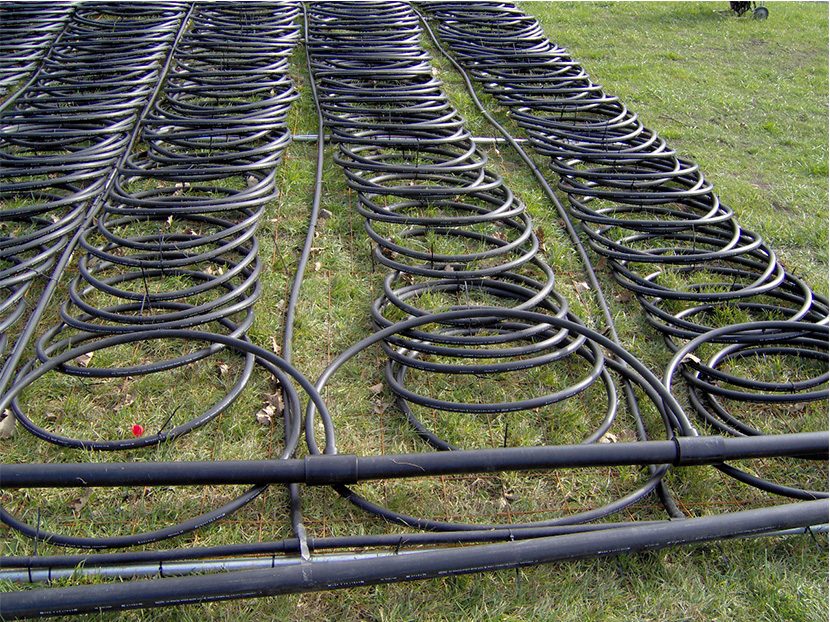The Giant Geothermal Opportunity
Why recommending a geothermal system over simple natural gas heating makes good business sense.

Much like when refrigerants with CFCs began to be phased out, combustion heating is on the same track. The Paris Agreement (COP21) is all about reduction of greenhouse gas emissions. All over the world, governments are converting to all electric, whether it’s cars or heat pumps. The U.S. is resistant to some changes like this (think of the Metric System), but combustion heating is more of a threat than refrigerants, and it’s already being phased out in some U.S. states and Canadian provinces and cities.
Like other U.S. states, New York has a powerful organization that is tasked with this change-over. The New York State Energy Research and Development Authority (NYSERDA) commissioned the Renewable Thermal Heating and Cooling division, directed by Donovan Gordon, as a strategy to build a clean, resilient and affordable energy system for all New Yorkers. Expanding markets for renewable thermal products and systems will create new opportunities for consumers to use clean, sustainable, locally-produced energy that reduces greenhouse gas emissions and can lower energy bills.
Last year, Renewable Energy World featured an article (bit.do/CanadaGeothermal) explaining that Ontario released its Climate Change Action Plan (CCAP), which notes that by 2030, building codes will outlaw gas heating in new construction; that’s serious.
The Ontario Geothermal Association’s Conference on Feb. 21 and 22 featured Ontario’s Minister of Environment, Glen Murray, along with Malini Giridhar, vice president of market development and public and government affairs, Enbridge Gas Distribution Inc. The title of Malini Giridhar’s presentation was, “Can a Natural Gas Utility Change the Rules for Geothermal?” (bit.do/GeoRules)
Big geothermal begins with utilities
So what does this have to do with the U.S.? Enbridge is a natural gas (NG) utility, or more appropriately an “energy utility,” that looks as though it’s going into the business of geothermal. It stands to reason that if it makes good business sense for one, other energy utilities will follow. Think about it this way, corporations are bound to perform in a fiscally responsible way for their stockholders. When a corporation has a surplus of product such as NG, they must find a way to sell it — unless they find something else in good supply that makes more money for the same effort. That something is quickly becoming geothermal ground loops. Geothermal exchangers are essentially fuel pipelines providing a virtually endless supply of stored solar thermal energy from the earth.
Heat pumps are a disruptive technology and will completely replace combustion heating. Just look at a comparison matrix, and you can see why:
A geothermal pipe system makes a “round-trip,” while gas piping is a “one-way trip.” The geothermal heat pump simply transfers heat with the water in the pipe, which then goes back to the earth for more energy. The gas furnace burns up its fuel and returns nothing except more emissions to the atmosphere.
Will that be one way, or round trip?
NG has three strikes against it:
- It is consumable (consumed in the process of creating heat).
- It creates GHG emissions (all combustion heating creates greenhouse gases).
- It is subject to carbon taxes.
The third strike mentions carbon tax. Fuels subject to carbon tax will become too expensive soon, and customers will be forced to look for another energy source.
Here’s the dilemma for the NG company; if its customer puts in their own geothermal system, they get the energy free, forever. That’s a loss of income stream for the utility. The problem with this scenario for the customer, is that they may need to pay $10,000 to $15,000, or more, for the geothermal piping, and that’s a lot to pay up front, no matter how wonderful the free energy is.
So the NG company can put in the geothermal piping for their customers, own it (just like the NG pipe), and charge the customer a monthly fee, just like our cable/internet charges. It is still selling energy, and it’s a win for both the NG company, and the customer. This goes for propane and oil companies also. Rather than tanks on site, and fuel delivery costs, the company would install and charge a service fee for the geothermal piping connection.
Geothermal heat pumps are the polar opposite of NG:
- Geothermal is renewable (solar energy in the earth is continually replenished).
- Geothermal creates no GHG emissions (no combustion on site).
And with the benefit of no carbon taxes, it’s only going to become more and more affordable.
As natural gas utilities consider the costs for pipelines, it’s becoming easier to see why an energy utility would find it attractive to harvest free solar thermal energy, and have the ability to charge a monthly service charge. This is a public service with benefits for all involved.
Whether a person believes any of the GHG emissions/global warming story or not makes no real difference in the effectiveness and genius of geothermal heating and cooling. Remember that geothermal cooling and heating provides all of the benefits that the wealthy and privileged want (and get) in their heating and cooling systems:
- The quietest and most comfortable system (nothing outside to make noise)
- Provides either hydronic (floor or ceiling) or forced air cooling and heating
- Is highly energy-efficient (rated most efficient in the world by the U.S. DOE)
- Eliminates fresh water consumption (from cooling towers, typical for commercial applications)
- Provides storm proofing (again, no outside equipment)
- Clears up valuable roof-space and other real-estate (needed for outside equipment)
- Lasts a long time (no outside equipment to weather-away)
- Eliminates on-site greenhouse gas (GHG) emissions (replaces the boiler)
Find out more
Geothermal exchanger-sourced buildings fit the worldwide model of sustainability perfectly. A geothermal building uses less energy than any other HVAC system, whether equipped with central chiller plants or distributed heat pumps. They use renewable energy, pumped to and from the earth, eliminate on-site combustion heating, and eliminate fresh water consumption related to cooling tower operation. With no cooling towers, the normal monthly chemical maintenance and cleanings are eliminated. Geothermal equipment lasts longer, and a geothermal heat pump does both heating and cooling (furnace only heats).
Curious about what will work for your application? Check with the International Ground Source Heat Pump Association (www.selectra.co.uk/energy/guides/market/igshpa), the Geothermal Exchange Organization (www.geoexchange.org), or just email me.





